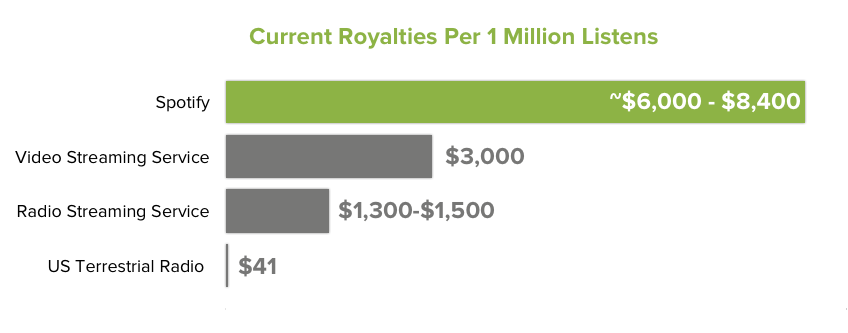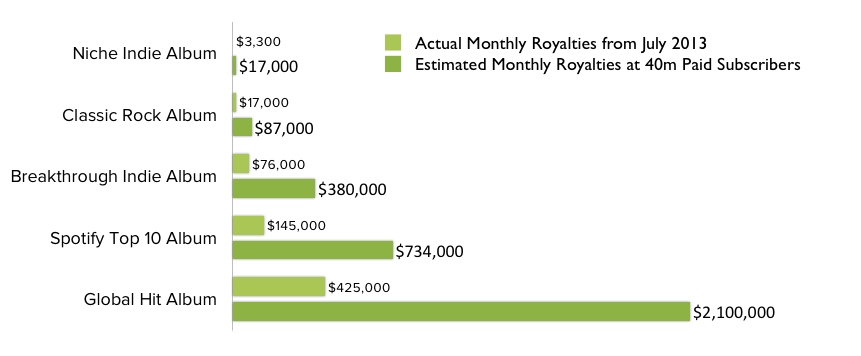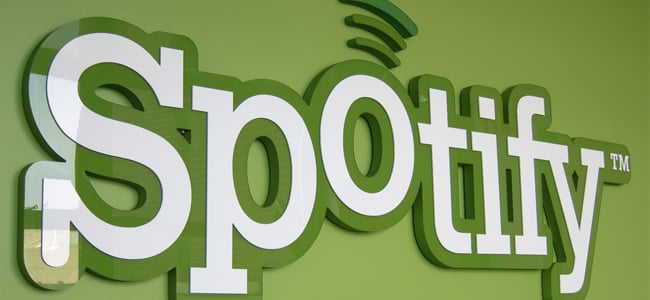Streaming services might be great for consumers and labels, but it’s been difficult to ignore the swelling ranks of artists that have cried foul over the pittance they’re paid by digital music plaforms.
It’s a a steadily growing chorus of detractors that arguably began with Grizzly Bear, reached a crescendo with Thom Yorke and Nigel Godrich of Atoms For Peace, and also includes powerful voices like Amanda Palmer, David Byrne, and the Swedish Musicans’ Union; all singing the same tune: that Spotify simply doesn’t pay enough to artists.
Spotify’s 24 million global users may have racked up a staggering 4.5 billion hours worth of listening in 2013, but the issue remains just how that translates into generating money for the musicians who supply the service with the music; its lifeblood.
The issue of the Swedish-bred company’s transparency with what they actually pay musicians is one that Spotify is now facing head-on, by revealing the exact details and data of its royalty schemes.
In an effort to expose the inner workings of their business model in detail, Spotify has offered the specific numbers and mathematics behind what it pays rights-holders. Including answering the burning question – how much does an artist get per stream? The answer: $0.007… but it’s growing. In an effort to expose the inner workings of their business model in detail, Spotify has offered the specific numbers and mathematics behind what it pays rights-holders.
The detailed royalties schemes are unveiled via a new platform from the streaming service called Spotify Artists, designed to offer artists and managers “guidelines [on] how to get the most out of Spotify,” according to the company; “Our goal for the site is to put Spotify royalty payments in perspective and context for the artist community.”
Spotify has paid out more than $500 million to rightsholders in 2013, a figure it threw up in defence back when Thom Yorke and Nigel Godrich slammed the service, and has raised more than $1 billion in total since its launch in 2008.
Love Music?
Get your daily dose of metal, rock, indie, pop, and everything else in between.
Spotify has paid out more than $500m to rightsholders in 2013, and more than $1bn in total since its launch in 2008, celebrating its 5th birthday in October, but the key word here is ‘rightsholders’. A few simple diagrams explain (pictured below) that Spotify pockets approximately 30% of the revenue generated from streams, while the other 70% is handed to labels, publishers, distributors, who in turn pass on the profits to artists.
Or as the Spotify Artists website puts it:
Once Spotify has paid a rights owner the total royalties due for their accumulated streams, that label or publisher pays each artist according to that artist’s contractual royalty rates. This will likely also take into account other factors including recoupment status, which is one reason that different artists in different deals might ultimately receive different royalties from their respective labels and publishers.
Independent artists can retain up to 100% of their royalty payouts from Spotify by using one of our aggregator partners such as Tunecore (a small fee may apply).”

Not quite a major revelation, but interestingly Spotify details that the assumption that it pays royalties per stream is not entirely accurate. Instead, the $0.007 figure is a mix of streams from users who pay for a monthly subscription and those that use the ad-supported free service.
In Spotify’s wording: “These variables have led to an average “per stream” payout to rights holders of between $0.006 and $0.0084. This combines activity across our tiers of service. The effective average “per stream” payout generated by our Premium subscribers is considerably higher.”
Meaning that the number of times a song is streamed does impact the amount of money generated for that particular artist’s rightsholders, even if it is a fraction of a dollar, but Spotify argues that this figure adds up over time to a significant payday for artists.
For instance, by the $0.007 figure, one of Spotify’s most streamed songs of the year – Daft Punk’s mega-hit ‘Get Lucky’ – would have generated $10,500 from the 1.5 million streams it generated in just 24 hours (on 20th April). So over days and days at that high rate, yes, the Parisian pair would’ve raked in a considerable amount. But not everyone’s Daft Punk.
Spotify further defends the relative wealth of this seemingly small figure by comparing Spotify payouts as being significantly higher to radio, and other music and video streaming services (see below), with their research showing the average ‘US music listener’ pays US$ 25 annually on music, a figure that rises to US$ 41 per year for the average Spotify user across both its free and premium models.
Meaning that if you’re ticked off about the (small) amount artists are paid, the best thing you can do is start paying for the $AU 11.99 a month to help increase the overall ‘pool’ of revenue handed to rightsholders.
Of course, this is in Spotify’s best interests (since they pocket 30% of that revenue) and is their end-game, to have a high mix of paying monthly subscribers that bring higher revenues along with an ongoing number of free users which keep the service ticking along and help add a little extra revenue for rights holders.
To illustrate this growth, Spotify shows the royalties it paid to five anonymous albums for a month in July 2013 – from $3,300 to a “niche indie album” through to $425,000 for a “global hit album” – and then demonstrates the estimated increased payouts to these same five albums if the service had a hypothetical 40 million paid subscribers (compared to the current 5 million it has currently).
But by current figures, even the biggest of the big will generate a little shy of half-a-million dollars a month.
There’s plenty more raw data and intriguing statistics to explore at the new Spotify Artists website, which is launching a new online dashboard to provide real-time streaming data for artists on the streaming service,
“Artists can use these analytics tools to understand how their songs spread for months and years after a release,” explain Spotify, who are also adding two new features to the service, the addition of ticketing and merchandise listings within the Spotify, for free, allowing users to directly buy concert tickets from within the app and rolling out merch listings in the coming months.
It’s a conceivable olive branch from Spotify towards the likes of Thom Yorke, David Byrne, Beck, et al. that have been hammering the service, but one that conceivably come as ‘too little, too late’. Despite its global foothold, Spotify is facing stiff competition from like-minded streaming services, such as Apple’s emerging but booming iTunes Radio, and the French-based Deezer, which is accelerating its growth at a rate where it could overtake Spotify by 2014.
Perhaps this time next year, musicians will have a new streaming service to aim their complaints at? Heavy is the crown…

































